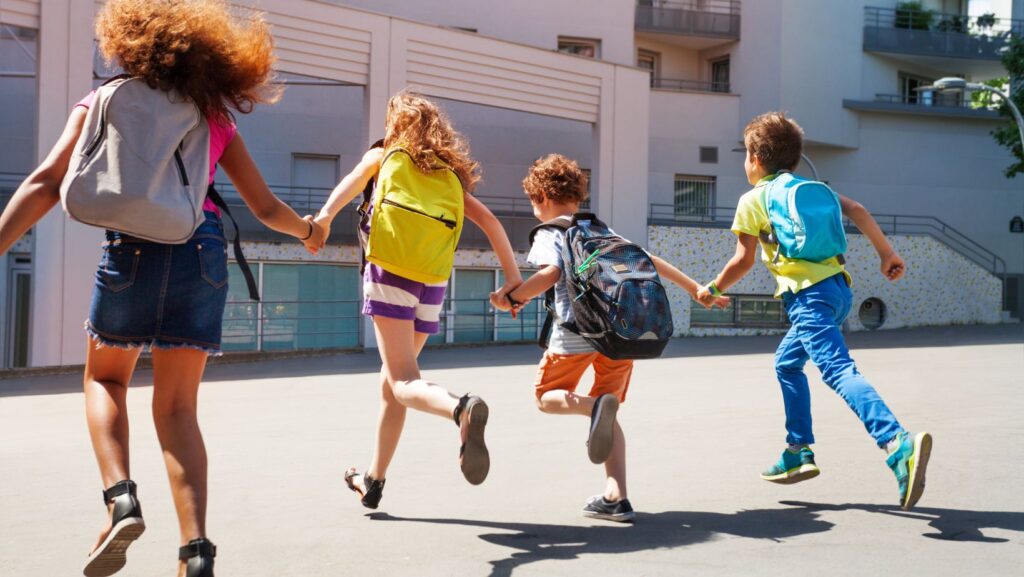Embarking on a backpacking adventure with kids might seem daunting, but it’s an unparalleled opportunity to foster their love for nature and nurture their sense of adventure. This article will guide parents and guardians on how to turn this seemingly challenging endeavor into an enjoyable and unforgettable experience.
Backpacking with kids doesn’t mean you have to compromise on the thrill of exploration. With the right preparation and mindset, it can be a fun-filled journey for everyone involved. Let’s delve into the best practices, essential tips, and handy tricks to make your family backpacking trip a resounding success.
Completing this section involves taking into account two critical factors: kids’ limitations and the propensity for unexpected situations to occur.
Backpacking With Kids
Understanding Kids’ Limitations
 Recognizing children’s limitations stands as a crucial point in any backpacking adventure. Young children possess less strength than adults, impacting their ability to walk long distances. Also, their short attention spans pose challenges during long, monotonous trails. In such scenarios, incorporating games and activities enhances their hiking experience, fertilizing the seeds of their love for nature.
Recognizing children’s limitations stands as a crucial point in any backpacking adventure. Young children possess less strength than adults, impacting their ability to walk long distances. Also, their short attention spans pose challenges during long, monotonous trails. In such scenarios, incorporating games and activities enhances their hiking experience, fertilizing the seeds of their love for nature.
Physiological aspects, such as children’s lower tolerance for extreme weather conditions, demand attention as well. For example, extra layers of clothing combat lower temperature tolerance during winter backpacking trips. Additionally, high levels of physical activity make kids susceptible to dehydration, requiring frequent water breaks coupled with planned healthy snack times.
Planning for Unexpected Situations
Children’s unpredictability complements the uncertainties of nature, increasing the chances of unexpected situations. Slippery rocks could lead to skinned knees, sudden rain could dampen spirits, and wild, rare insects might induce panic. Preparing for these eventualities involves packing a well-equipped first aid kit, waterproof gear, and educating children about various elements of nature, respectively.
Planned routes must incorporate ‘exit points’- shortcuts or alternate paths leading to the end, facilitating an early end to the hike if necessary. Backup plans, such as nearby camping sites or cabins, provide safe alternatives in case of adverse weather conditions or other unanticipated circumstances. Emergency services contact numbers, GPS, and adequate signal coverage remain non-negotiable components to ensure safety during wilderness backpacking adventures.
Inclusion of frequent breaks and downtime, presenting opportunities for kids to rest and play, reduce the likelihood of fatigue and maintain the fun quotient of the trip. Pack lightweight gear and essentials, limiting the burden for the young trekkers. Parental patience and vigilance work hand in hand with these measures, ensuring a memorable, fulfilling, and safe backpacking experience.
Preparing for Your Adventure
The preparation stage is a critical factor in ensuring every family member enjoys and cherishes the backpacking trip. The focus of this section lies in two key frameworks: selecting appropriate gear for kids and identifying packing essentials for younger backpackers.
Choosing the Right Gear for Kids
Picking the right gear for kids can make a significant difference in their comfort and safety during a backpacking trip. The primary items include suitable backpacks, clothing, footwear, and outdoor equipment.
- Select backpacks specific for kids, keeping in mind the child’s size, the backpack’s weight, and its fit.
- Example: Deuter Kids’ Fox 30 Hiking Backpack fits a child’s growing skeleton perfectly, providing the support they require for carrying their gear.
- Opt for clothing items that provide protection against varying weather conditions. Think multi-layered clothing and waterproof jackets.
- Example: Patagonia’s Baby Snow Pile One-Piece Snowsuit offers warmth in freezing temperatures.
- Choose footwear designed for hiking. They must be sturdy, have good grip, and most importantly, be comfortable.
- Example: KEEN Kids’ Targhee hiking boot is durable and offers excellent traction.
- Invest in practical outdoor equipment such as sleeping bags, hydration systems, and insect repellents specially designed for kids.
- Example: The REI Co-op Kindercone 25 Sleeping Bag is an excellent choice for keeping kids comfortable at night.
Remember, when it comes to backpacking with kids, proper preparation paves the path to an exciting adventure. After all, the journey matters just as much as the destination.

